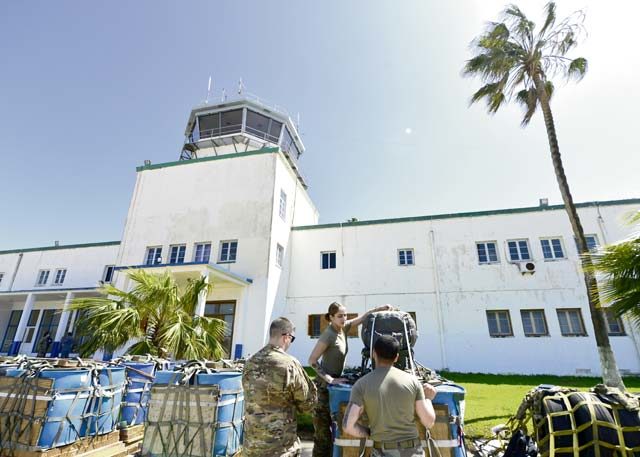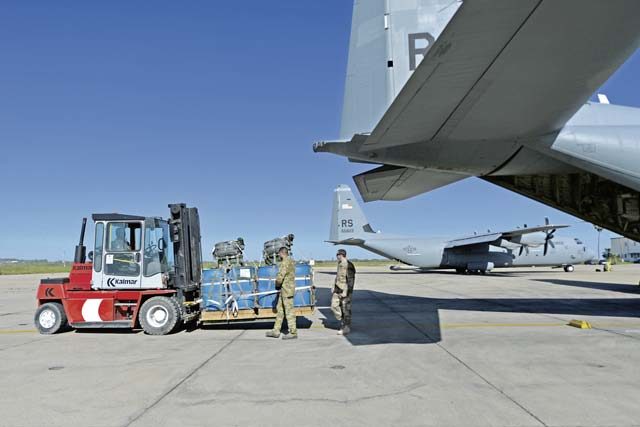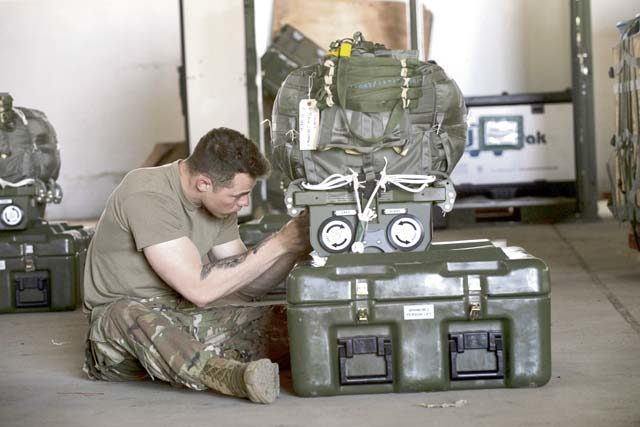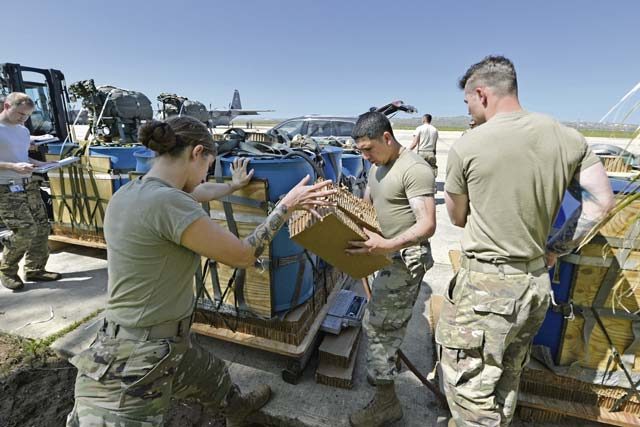
KENITRA AIR BASE, Morocco — Since the introduction of airdrops in World War II, flying at low levels has had its concerns: How do you ensure the accuracy of delivering cargo while also keeping your aircraft and crew safe from hostile ground forces?
The answer: A self-navigating cargo load.
United States Air Forces in Europe and Africa service members dropped U.S. Africa Command’s first Joint Precision Airdrop System with a Modular Autonomous Guidance Unit, called a JPAD-MAGU for short, during Exercise African Lion 18, April 18, near Kenitra Air Base, Morocco.
The Royal Moroccan Armed Forces (FAR) hosted the exercise’s air space, drop zone and operations center to support the 86th Airlift Wing, 37th Airlift Squadron, 435th Contingency Response Group and 173rd Infantry Brigade Combat Team to prepare and execute the historic event.
For years, satellite navigated cargo loads have been advantageous in cargo drops, however its vulnerability to hacking creates limitations. Furthermore, the self-directed MAGU takes JPADS where GPS often cannot: in blocked, mountainous or high-populated urban locations.
U.S. Army Staff Sgt. Giovani Gomez, 173rd Infantry Brigade Combat Team (Airborne) parachute rigger, said the benefit of using the JPAD-MAGU is to ensure accuracy and safety in order to get the supplies to personnel.
“If we had troops in a bad area and we needed to give them food and water, we can fly above another air space and drop this JPAD to fly its way down to their pin-point location,” Gomez said. “In place of us flying at a lower altitude and dropping the CDS there and it ends up in bad territory, now we just helped the other people rather than our own.”
Along with the JPAD-MAGU’s ability to be released from a higher altitude of 24,500 feet, its accuracy condenses ground troops’ travel time due to its smaller drop radius.

Prior to the rigging and drops, PAD operators must configure and compute climatology data into a chip inserted into the brain of the system, the MAGU.
Through the on-board battery pack, and a GPS-controlled steerable parafoil decelerator, the JPAD-MAGU “will get itself where it needs to go,” said Maj. Jacob Morton, 37th AS navigator and PADs operator.
“What we’re doing is we’re giving it the best possible chance of getting there; we’re doing the work so it doesn’t necessarily need to,” Morton said.
Gomez said they’re excited for the JPAD-MAGU drop and hope to continue working with other countries like Morocco.
“They might do things differently than how we do them,” Gomez said, “We can learn from them and they can learn from us.”
The combined multilateral exercise aims to enhance U.S. and FAR professional relationships while supporting interoperability of forces to further counter-violent extremist organizations.
“We’re trying to create a more stable North Africa.” Capt. Laura K. Martineau, 37th AS pilot and Exercise AL 18 mission commander said. “Exercise African Lion 18 is an AFRICOM-directed exercise with the Marine Forces Europe and Africa. We are executing with a lot of Kaiserslautern Military Community entities with our joint partners.”
While the KMC and FAR service members work together up North, active and reserve Marines, Soldiers, Seamen and Airmen work around the clock down South conducting multilateral training with units from the FAR, as well as contingents from Burkina Faso, Canada, Chad, Egypt, France, Great Britain, Greece, Italy, Mali, Mauritania, Senegal, Spain, and Tunisia.
The 900 U.S. military personnel hope to have promoted mutual understanding and international security, for a safer, stronger, North Africa.
Read More about U.S./Morocco Support









